
Ceci Sécola

Ceci Sécola
In 2013, the release of the documentary “Blackfish” marked a turning point in the public’s perception of aquaria and animals in professional care everywhere. As a result, accredited aquaria took it upon themselves to become more transparent and open about their true purpose with the public.
The film, directed by Gabriela Cowperthwaite, follows the life of a captive orca whale involved in the death of a trainer and raises evocative questions about the ethical implications of keeping large, intelligent animals in human care habitats. Through interviews with former trainers and emotionally charged footage, “Blackfish” catalyzed a widespread conversation about animal welfare, transparency, and the role of aquaria in both education and entertainment.
The documentary’s cultural impact was immediate and far-reaching. Following its debut at the Sundance Film Festival and subsequent broadcast on platforms such as CNN and Netflix, “Blackfish” reached millions of viewers and ignited a viral media movement. Attendance and revenue at similar facilities declined rapidly. In 2014 alone, the aquarium featured in the film lost nearly 1 million guests. By 2015, its net income had dropped 84% compared to the same quarter the year prior.
But the film’s impact was far deeper than just economic. It fundamentally altered how the public viewed aquariums and zoos, placing intense pressure on institutions to reevaluate their practices and messaging. In some cases, that pressure led to substantial reforms.
In 2016, SeaWorld announced the permanent end of its orca breeding program and later that year California passed the Orca Welfare & Safety Act, prohibiting captive breeding and performances involving orcas. Canada followed their lead in 2019, banning the breeding and performative display of cetaceans (whales, dolphins, and porpoises) under the Ending the Captivity of Whales and Dolphins Act.

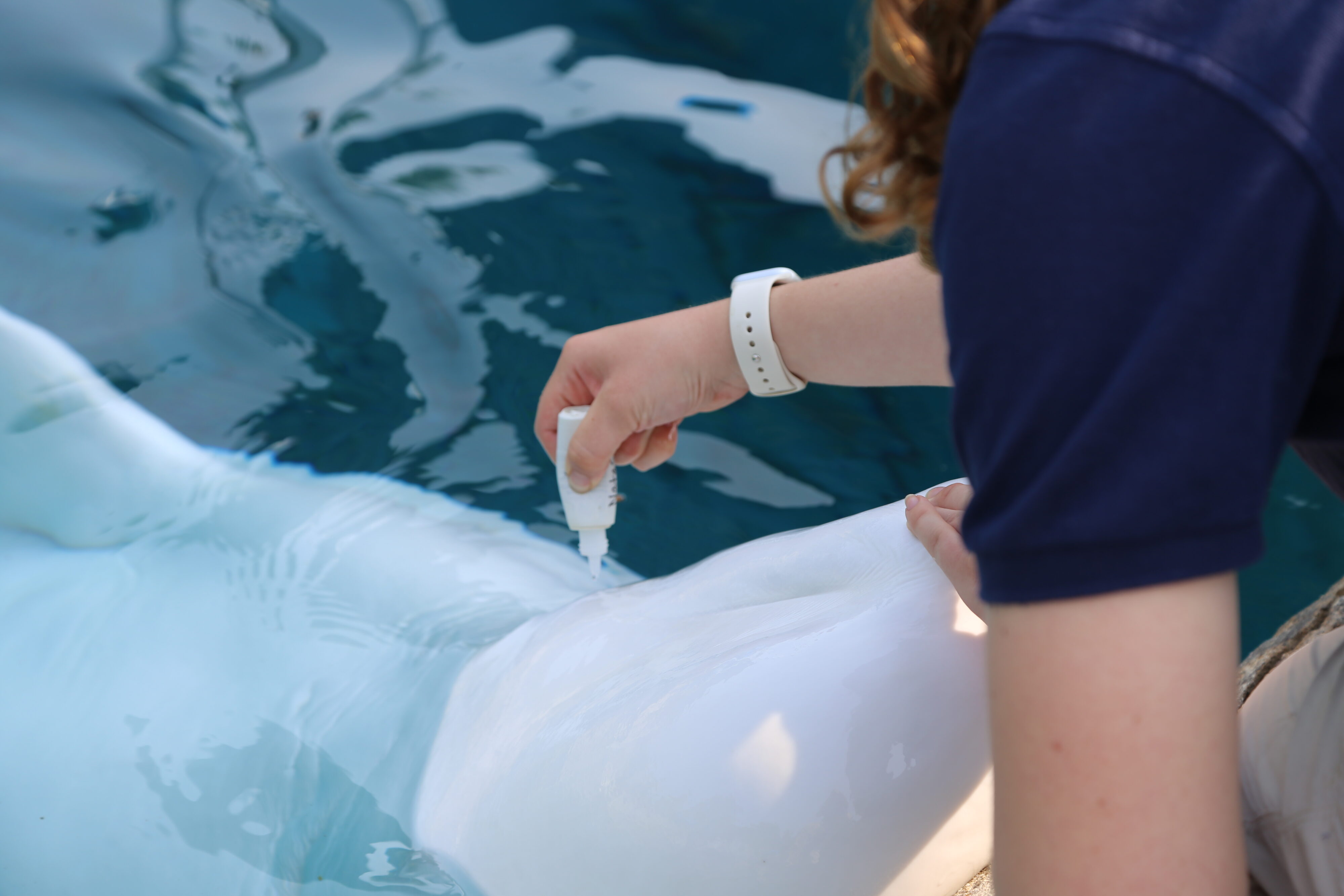
While these efforts were celebrated by many, some outcomes proved more complicated than intended and are believed by expert zoologists to have stemmed from misinformation. For example, the orca breeding ban, though well-intentioned, has drawn criticism from animal care experts who argue that it now prevents these animals from engaging in important natural behaviors, such as forming long-term social bonds and raising calves. In stopping breeding entirely, institutions must now prevent orcas from mating — which then introduces its own ethical challenges.
Similarly, laws that target animal-focused “performances” with the goal of eliminating exploitation unintentionally restrict presentations that offer not only mental and physical stimulation for the animals, but also valuable conservation messages for the public. Such policy decisions, though often rooted in compassion, don’t always reflect what is best for the animals themselves.
“Many of the animals that they would love to be released would not survive in the wild,” said Eric Anderson, doctor of veterinary medicine and director of animal health and welfare at Mystic Aquarium. “To push for that is not putting the animals’ best interest or welfare first and foremost. It’s putting a belief or a political agenda first […] the animals should always be the highest priority.”

Over the past decade, the Association of Zoos and Aquariums (AZA) — the highest standard of accreditation for the industry — implemented substantial updates to its Accreditation Standards and Related Policies. The updated guidelines highlight “animal wellbeing” over basic care, strengthen animal ambassador protocols, and prioritize conservation-based public education. In response to the shifting landscapes, AZA also prioritized transparency and openness between their facilities and the public — for much of their beneficial work was not being recognized.
These increasingly stringent guidelines represent significant change from the inside. Accredited institutions hold themselves to higher ethical and scientific standards than ever before — distinguishing them from facilities that operate without such oversight. “Only about 10% of the licensed animal exhibitors in the United States are accredited by AZA,” said Jenn DiNenna, AZA’s vice president of accreditation programs. “It’s a small number, but people are starting to recognize it — and it is a gold seal of approval.”
Still, forgotten in the midst of policy debates and animal activism is an undeniable truth: The animals in accredited aquaria are not there for entertainment, but because they need lifelong care. As Anderson stated, “It doesn’t matter if it’s a one-inch minnow or a 2,500-pound beluga whale, we will treat them all the same and give them all the same level of welfare.” Whether an animal was born into human care, transferred between facilities for specialized care, or rescued for health reasons and deemed unreleasable, aquariums often serve as their only safe alternative.
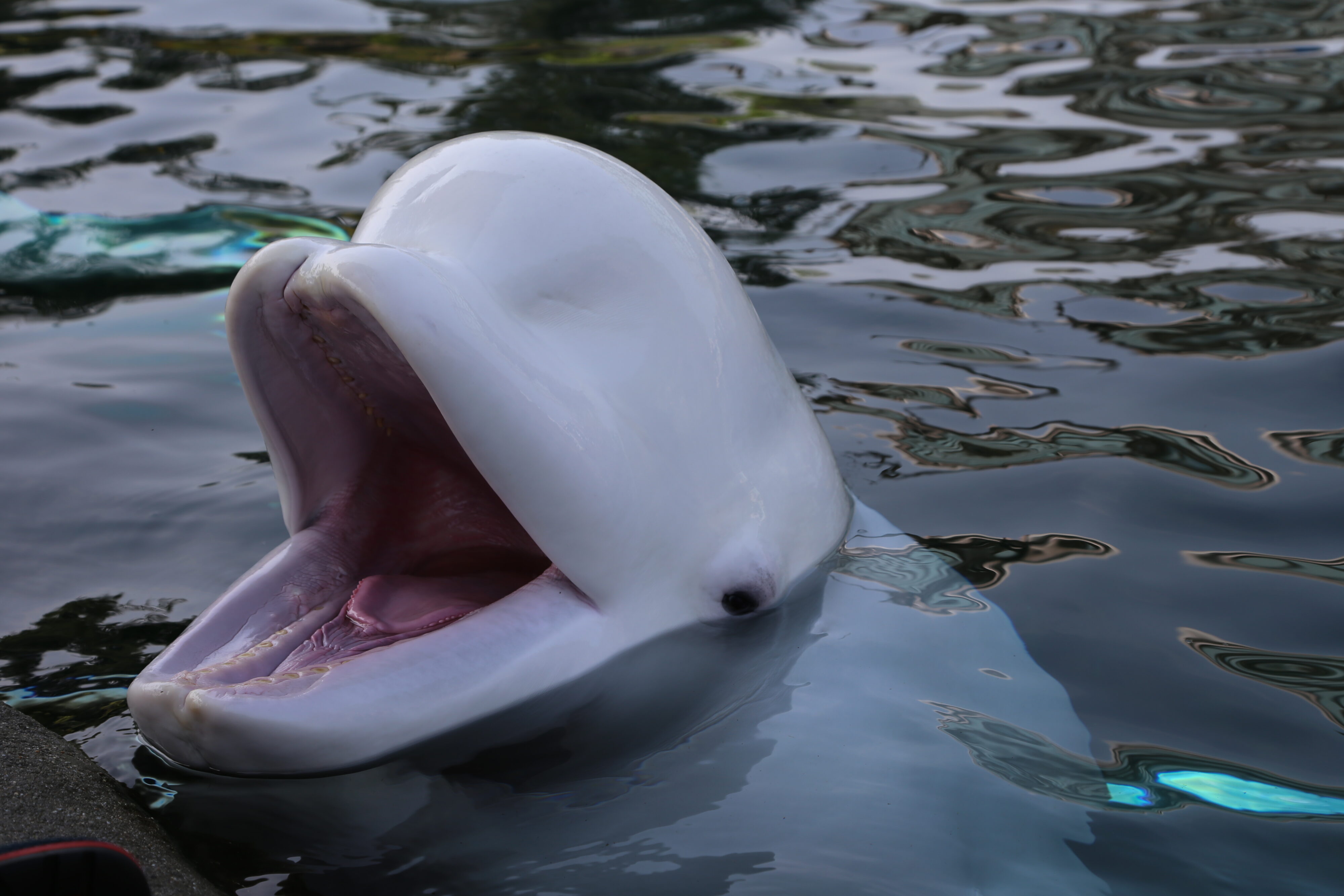
These institutions not only house animals — they rehabilitate and monitor them, continuously innovating their practices to meet animals’ evolving needs. An accredited aquarium’s value lies not only in the captivating and beautiful experience they offer guests, but also in the quiet, complex work that goes on behind the scenes. “We’re a nonprofit here. We’re not here to make millions of dollars,” Anderson said. “Our mission is education, conservation, and the welfare of these animals.”
For an animal like Charlotte, living at the aquarium is a second chance at life. Charlotte is a male (yes, that’s right!) green sea turtle, or chelonia mydas, who was brought into Mystic Aquarium in 2008 — almost 17 years ago. After getting struck by a boat, he was left completely paralyzed in his hind flippers and with a condition informally known as “bubble butt.” In other words, he has air bubbles trapped in his back end.
The combination of his new circumstances led to an array of problems regarding his swimming and buoyancy, which is why you can typically only see Charlotte swimming ‘face down.’ As such, veterinary and husbandry experts in the aquarium have deemed him “unreleasable.”
The goal of any rescue and rehabilitation program is to reintroduce the animals back into their natural habitat. Most rescued animals are successfully returned to their home in a matter of months after receiving diagnostics and treatments.
However, this is unfortunately not the case for all animals. In some cases, the release of an animal is unlikely to be successful due to its physical condition or behavior — and may even be detrimental to that animal’s wild population. In those situations, a decision to deem the animal “non-releasable” must be formally approved by government agencies, such as NOAA or U.S. Fish and Wildlife — ensuring that this designation is held to federal standards and not made unilaterally by any one facility.
“You could release (the animal) knowing that it’s probably going to die, or you deem it non-releasable, and you provide a facility that provides care for it for the rest of its life,” Anderson said. “And it becomes basically an ambassador for the species, for the situation(s) that these animals face in the wild, which are often human created situations.” Whether it’s entanglement in fishing gear, disease exposure, or boat strikes, every animal admitted into care carries valuable insight into the dangers facing their population.
Charlotte is one such ambassador. Although survival in the wild would be difficult for Charlotte due to his inability to swim and float properly, he continues to thrive in the aquarium today. Thanks to the exceptionally attentive and personal care that Charlotte receives, he has not only begun to regain some movement in his back flippers, but is in the process of being fitted for a weighted harness that would allow him to swim horizontally, something he has not done in a long time.
The work of aquariums like Mystic extends far beyond the walls of their habitats. While animal ambassadors such as Charlotte offer a visible and emotional connection to conservation for the visiting public, much of their impact occurs behind the scenes — in research laboratories, veterinary clinics, classrooms, and even policy rooms. Accredited aquaria are not just home to captivating habitats and care, but engines of science and learning.
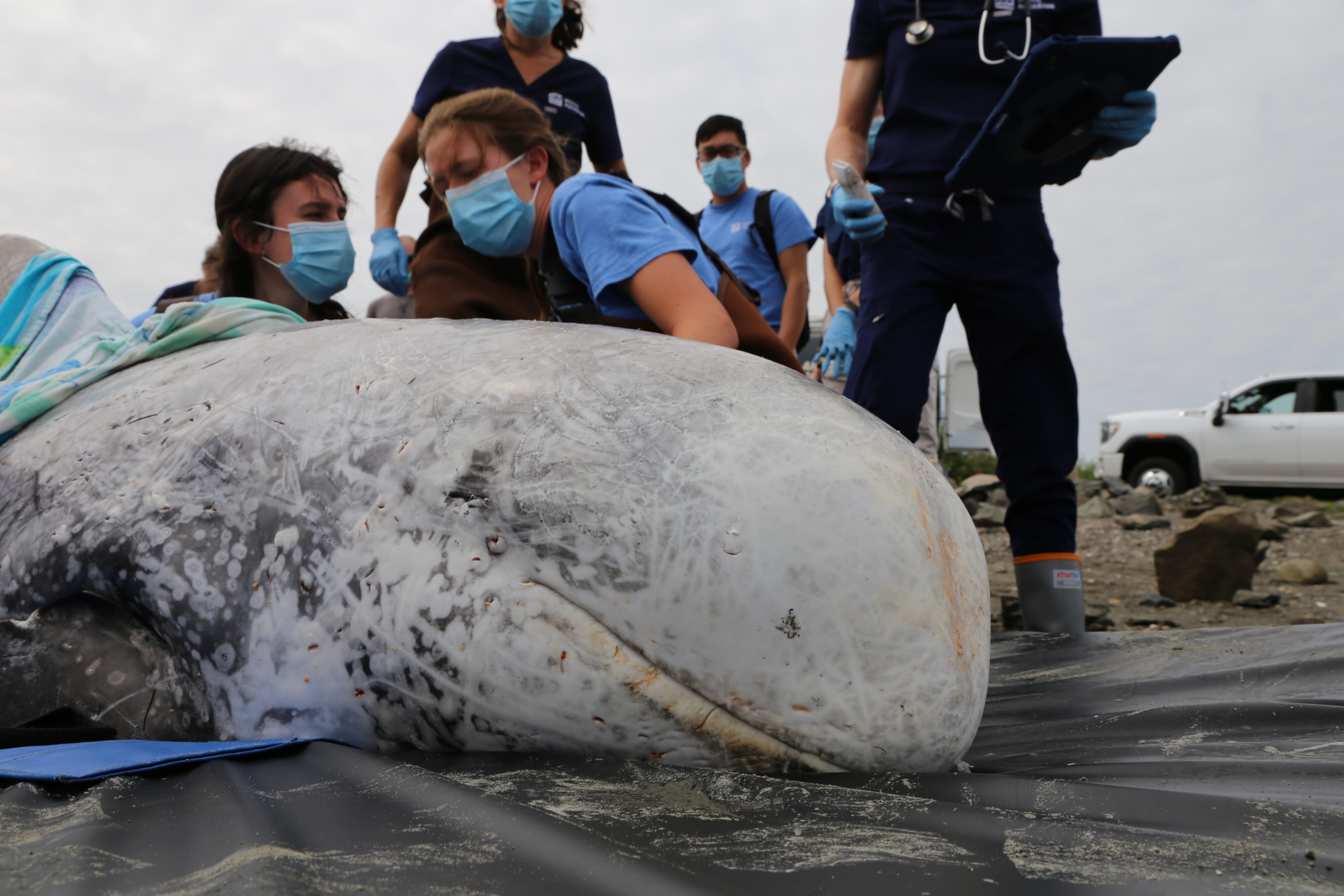
What makes these facilities’ work so critical and unique is time and access. Unlike short-term field studies, accredited aquaria offer experts uninterrupted, long-term access to individual animals. This allows for precise monitoring of natural behavioral development, health trends, responses to medication, and reproductive patterns over years or even decades.
These insights, which are substantially harder to obtain in the wild, help researchers understand not only how to treat and support animals under human care — but also how to translate that knowledge into strategies that support their species’ counterparts, non-invasively, in the wild.
Just as importantly, these animals are not passive test subjects. Participation in any research or medical procedure is voluntary. Trainers work closely with animals over time to condition them to cooperate with non-invasive sampling or wellness checks. But if an animal isn’t in the mood or declines a behavior that day, such as getting into a blood-draw position, they are not restrained or forced. “We’ll just try again tomorrow,” one veterinary team member explained. This mutual trust ensures that animals remain comfortable and respected throughout every interaction.
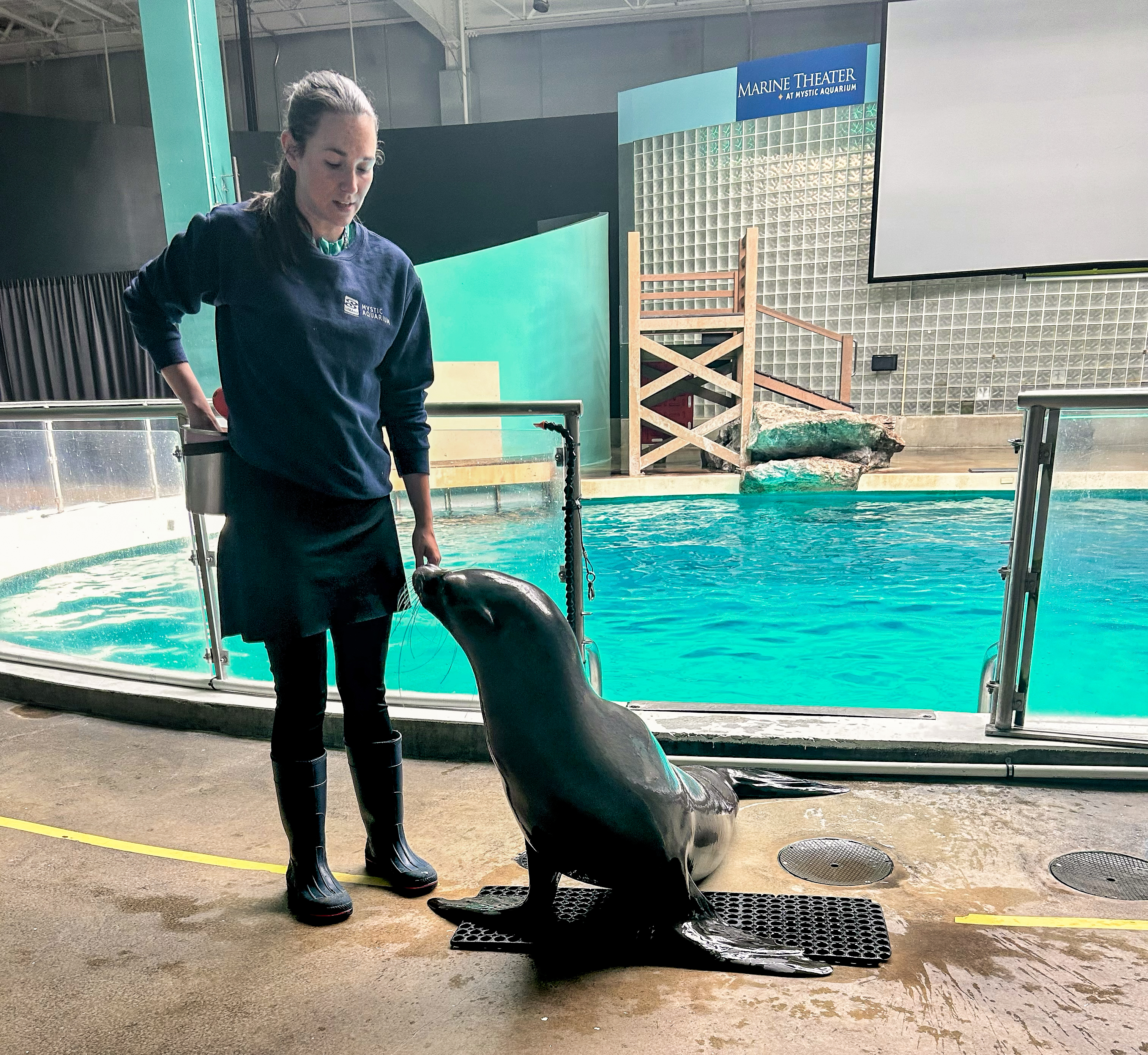
Take, for example, Charlotte’s position as an animal ambassador at Mystic Aquarium. Thanks to the first-hand knowledge he provides, researcher Ebru Unal is developing innovative methods for non-invasive sampling and analysis of environmental DNA (eDNA). This eDNA is genetic material that animals naturally shed into their environment.
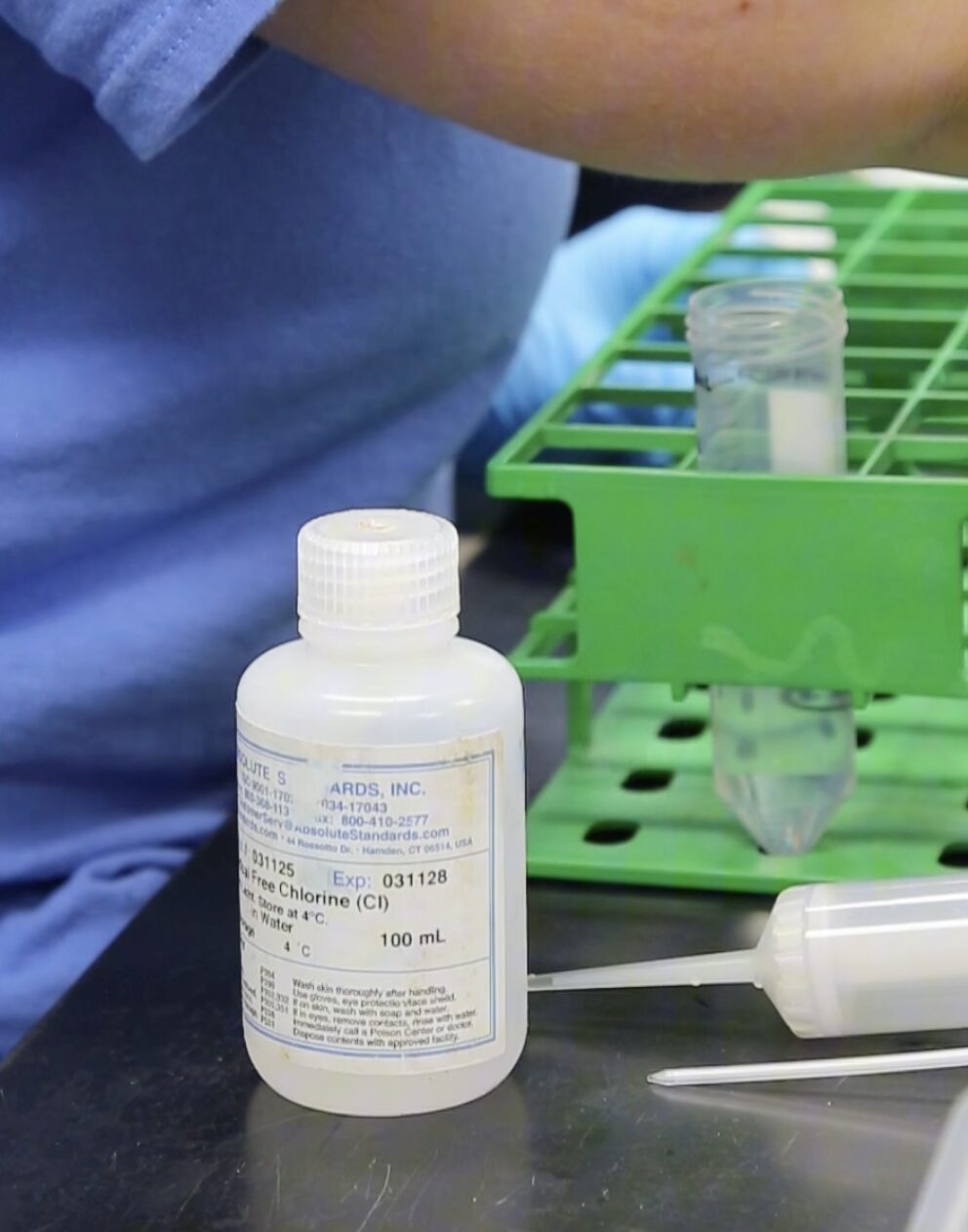
From a single water sample, researchers can detect which species are present in that body of water, monitor changes in their population size over time, and even identify pathogens like fibropapillomatosis (FP) that threaten vulnerable species such as sea turtles. Most importantly, this technology eliminates the need for physical contact or direct interference with wildlife for studies, making it a tool that is both effective and ethical.
In other cases, accredited aquaria support field recovery directly. Veterinary and ‘Animal Rescue Program’ (ARP) staff often assist in wildlife rescues, stranding responses, or develop clinical protocols that are later adopted into practice for wild populations. They also contribute to species conservation by applying the expertise gained from long-term cases to recovery efforts outside the aquarium walls, bridging the gap between rehabilitation and direct ecosystem care.
However, this work is not unregulated. The Association of Zoos and Aquariums (AZA) holds its members to the highest ethical and scientific standards. “All of our institutions must be participating in conservation programs,” DiNenna said. “Because that’s the real point. Zoos and aquariums don’t exist to show animals to the public. They exist to share the love of animals and for us to learn about these species so that we can help their counterparts in the wild.”
Every five years, accredited institutions undergo a full audit of their care, research, safety, and transparency practices. But excellence is expected every day. “Accreditation is 24/7, 365,” DiNenna said. “It’s not easier just because you’ve been accredited longer… There is accountability built into our process.” However, beyond protocols and checklists, modern aquaria are also redefining what it means to prioritize animal well-being. AZA’s standards now require annual welfare assessments that go far beyond physical health.
“Now we’re really, really focused on the individual well-being of every animal in the collection,” DiNenna said, noting that facilities are now catching subtle signs of distress or discomfort before they escalate. “They’re identifying small, little things that they notice in their animals that if they went completely unnoticed for too long, could turn into a bigger health concern.”
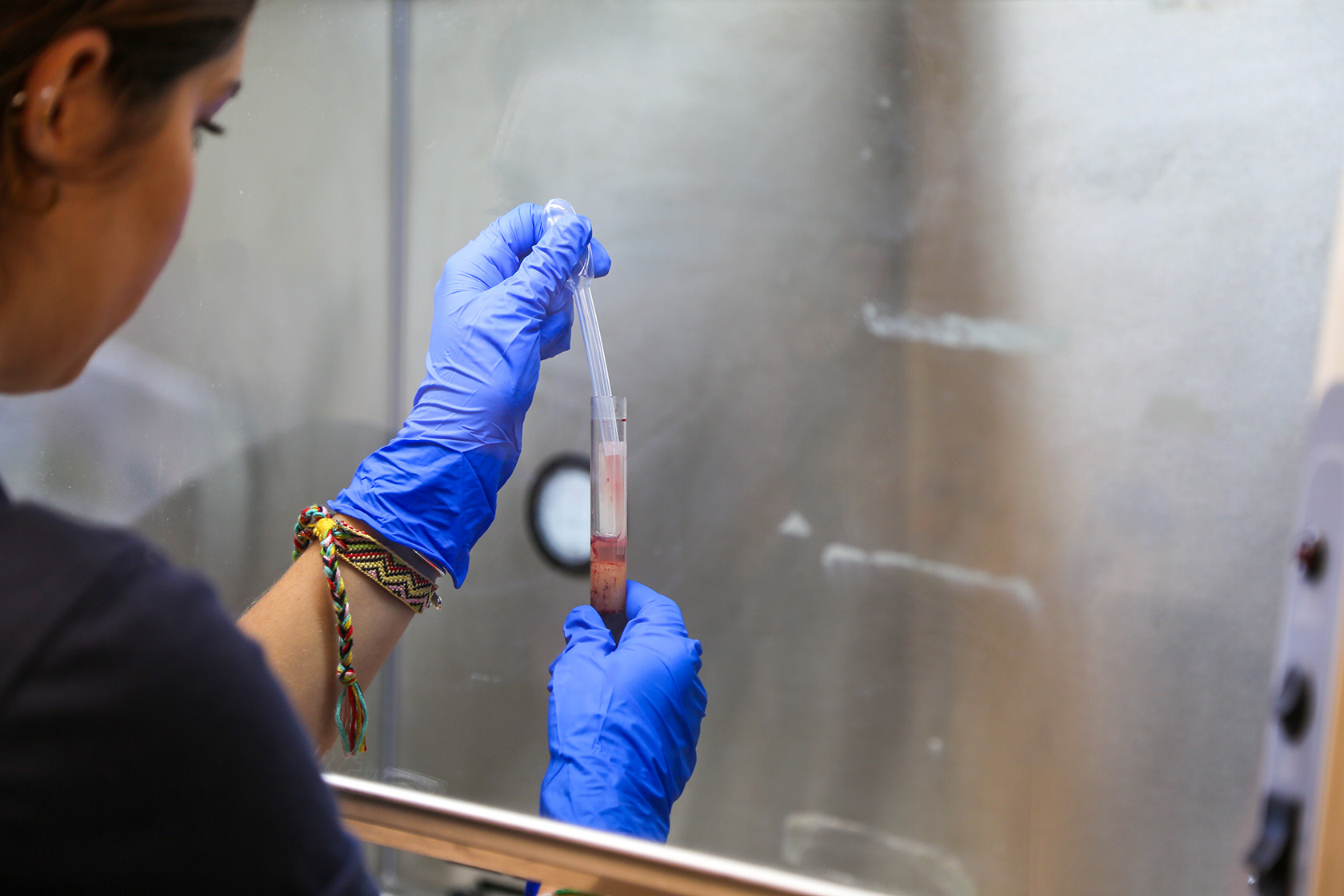
Anderson described the same evolution.
“We look at the whole picture – the healthcare, the nutrition, the behavior, the environmental enrichment, the water quality – and wrap it into a whole picture of ‘how is that animal doing?’” he said. “That’s how we’re trying to evaluate ourselves and the situation that each animal is in each day to make sure that we are doing the best we can for them so the animals can thrive.” Both experts also explained how they measure each animal’s wellbeing from a set of outputs mainly centered around: Is the animal behaving as it normally would in its natural environment?
This culture of care produces results. Sea turtle rehabilitation programs at AZA-accredited aquaria, such as New England Aquarium, have reached survival rates exceeding 80%. These rescued animals are not just surviving, they are being re-released and thriving. In some cases, these animals are tracked after release to monitor their success or inform teams in case of any future issues or an untimely death.
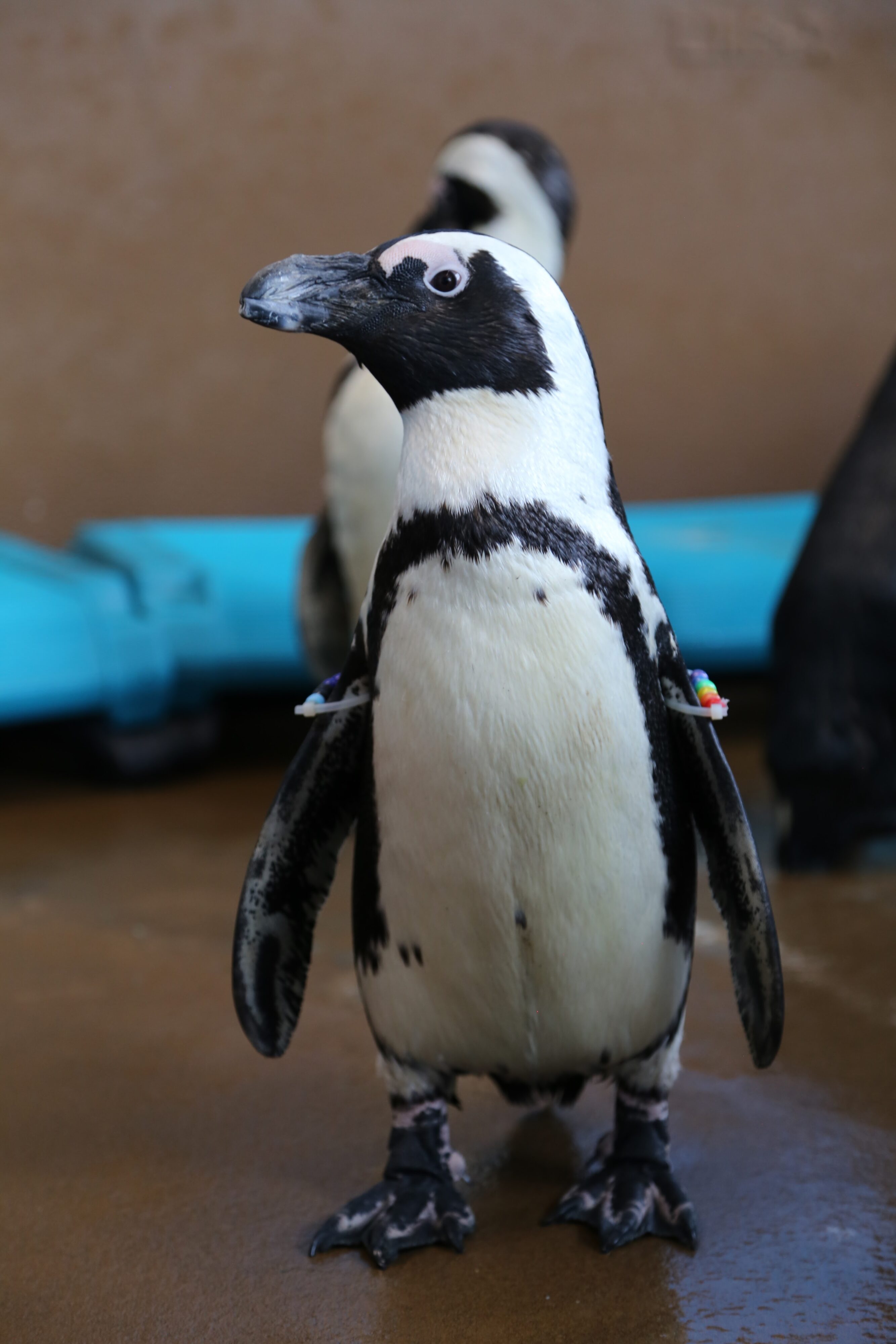
Beyond lifelong care, rehabilitation, and research, AZA-accredited aquariums actively contribute to species recovery through structured, collaborative programs like Species Survival Plans (SSPs), which manage the breeding and genetic diversity of endangered populations across facilities. These programs ensure long-term survival for species that may no longer have sustainable populations in the wild. At Mystic Aquarium, for example, these animals include African penguins, Panamanian golden frogs, and California sea lions.
Additionally, through AZA’s S.A.F.E. (Saving Animals From Extinction) program, accredited facilities work together around priority species to combine resources, research, fieldwork, and public outreach. They apply knowledge gained from animals under their care to protect biodiversity at a larger scale.
Together, these programs demonstrate that accredited aquaria are not ‘keepers’ of wildlife. They are structured, collaborative, and proactive pillars of conservation ensuring their efforts are meaningful and measurable.
Another substantial portion of their effort is focused on educating the public on their work, including topics ranging from the biology and nature of the animals to conservation efforts and changes visitors can make in their everyday lives.
After all, while concern surrounding aquaria following the film was understandable, the backlash undeniably left many people skeptical of all animal care facilities – including those whose missions are rooted in science, ethics, and long-term conservation. However, the distinction does matter. AZA-accredited aquaria operate under the highest standards of animal welfare, environmental responsibility, and scientific contribution.
They do not exist to exploit animals for entertainment, but rather to protect species, educate the public, and advance our understanding of their natural habitat. Supporting accredited facilities is about recognizing the critical work that happens behind the scenes. To dismiss them entirely is to ignore the lifelines they provide for science itself and the species in their care.
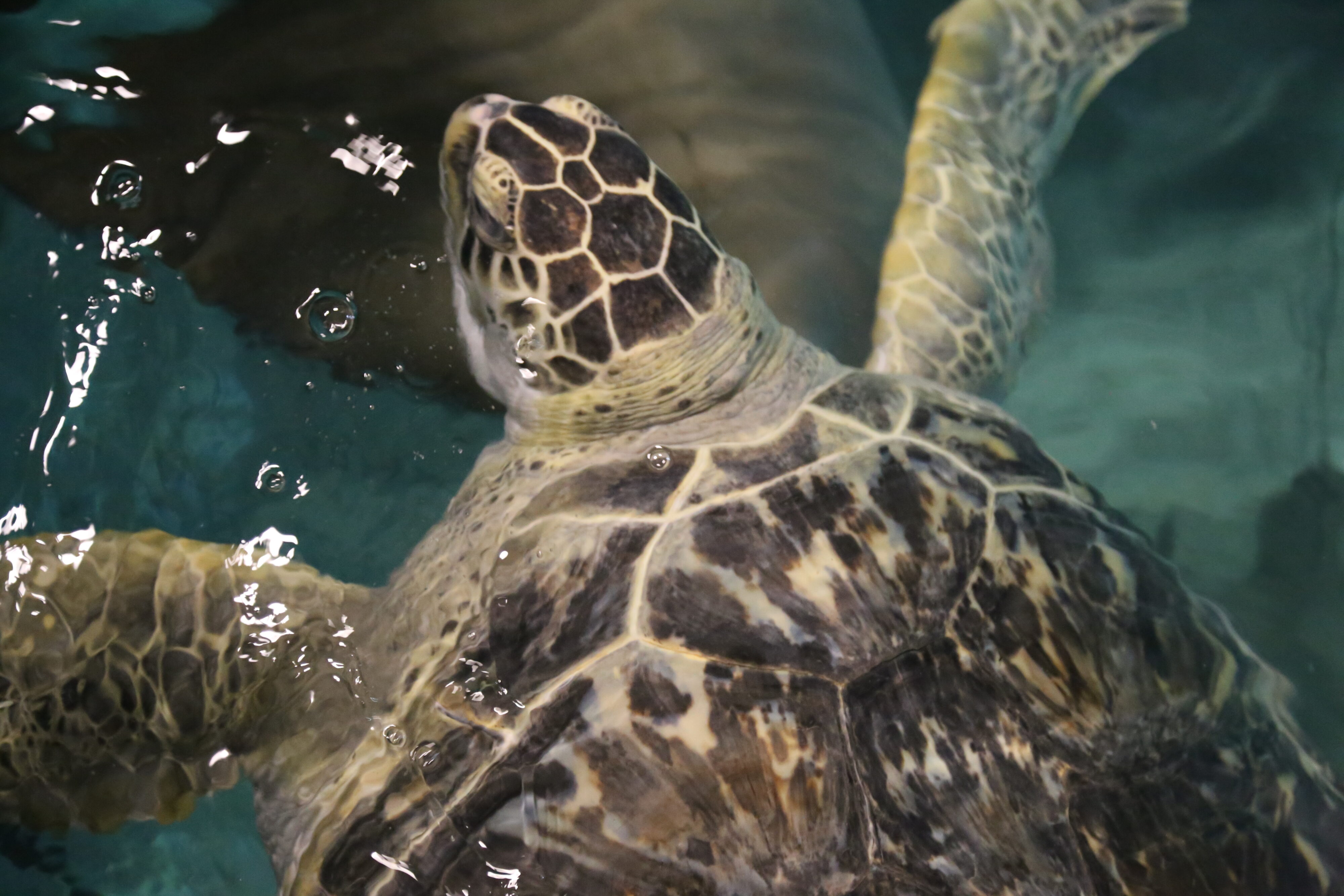
You can begin by being an informed visitor. Choose to support institutions that are accredited by AZA and, therefore, prioritize the well-being of the animals, transparency, and conservation impact. Your support directly helps to fund the critical work that these organizations do. But beyond visiting, stay engaged. Attend public lectures, join beach cleanups, take part in citizen science initiatives, or volunteer when the opportunity arises. While these actions may seem small, collectively they sustain the mission of these institutions.
Equally important is how you talk about these issues. In a time where misinformation is rampant, understanding the difference between entertainment-based and ethical conservation facilities is essential. Use your voice to advocate for responsible, science-driven animal care — and share what you’ve learned with others.
In the end, supporting accredited aquaria is about defending the future of conservation. The animals in their care represent more than just survival. They represent stories of resilience, collaboration, and hope. It is with continuous and conscientious support that we make sure those success stories, like Charlotte’s, never end.
The Planet Forward Mystic Aquarium Fellowship program was made possible with support by Michael Lech, David Freeman, and the Berl Brechner Fund.